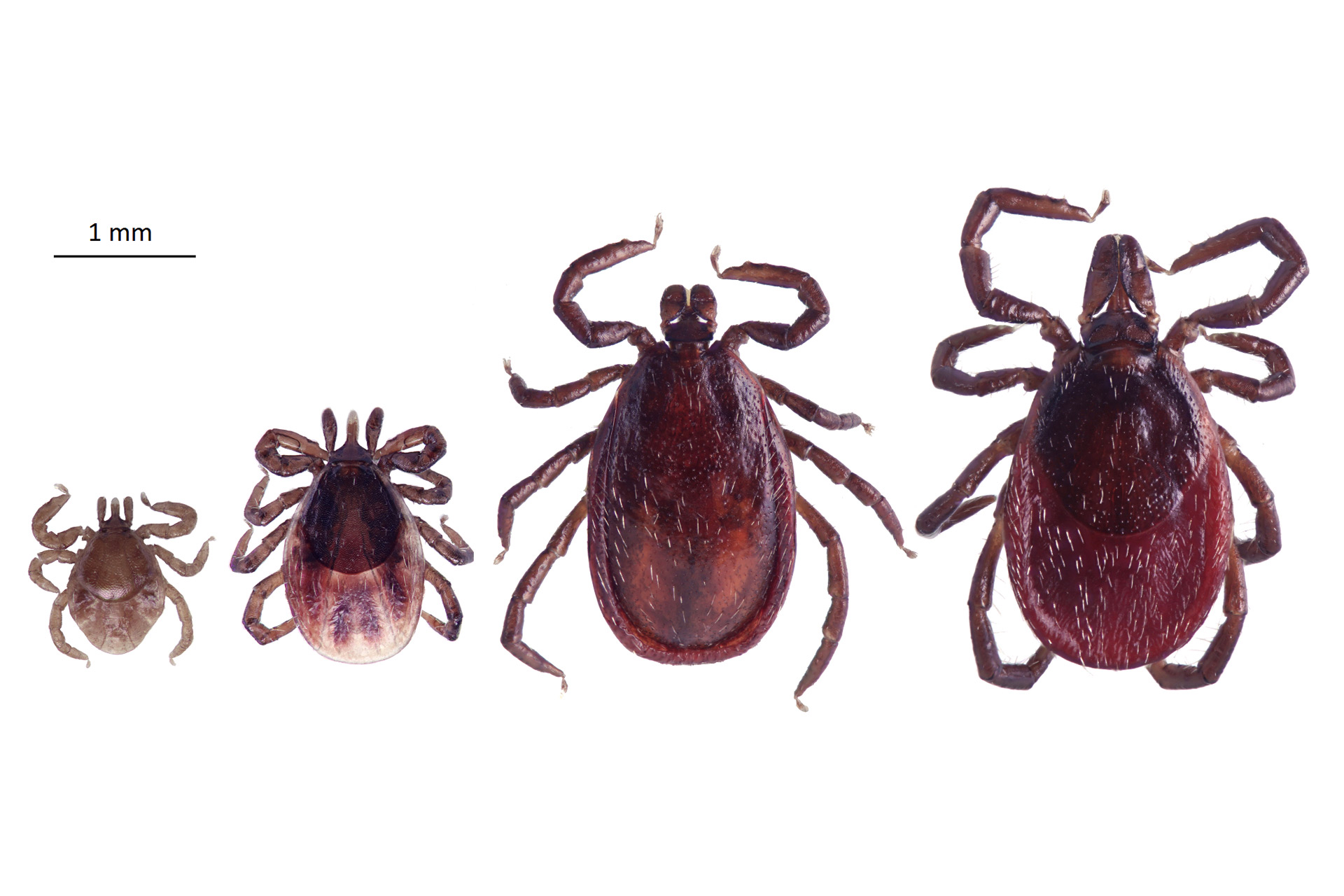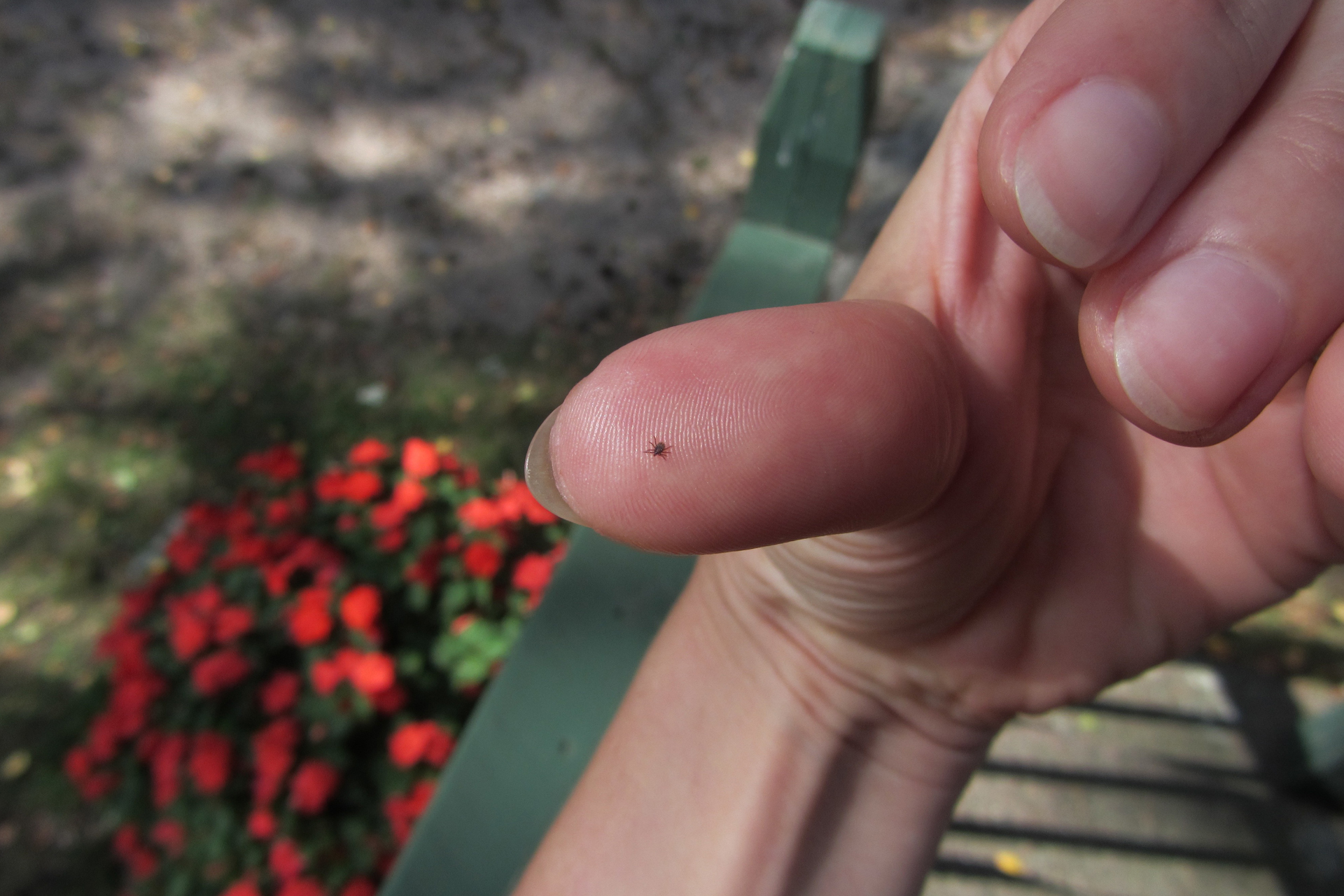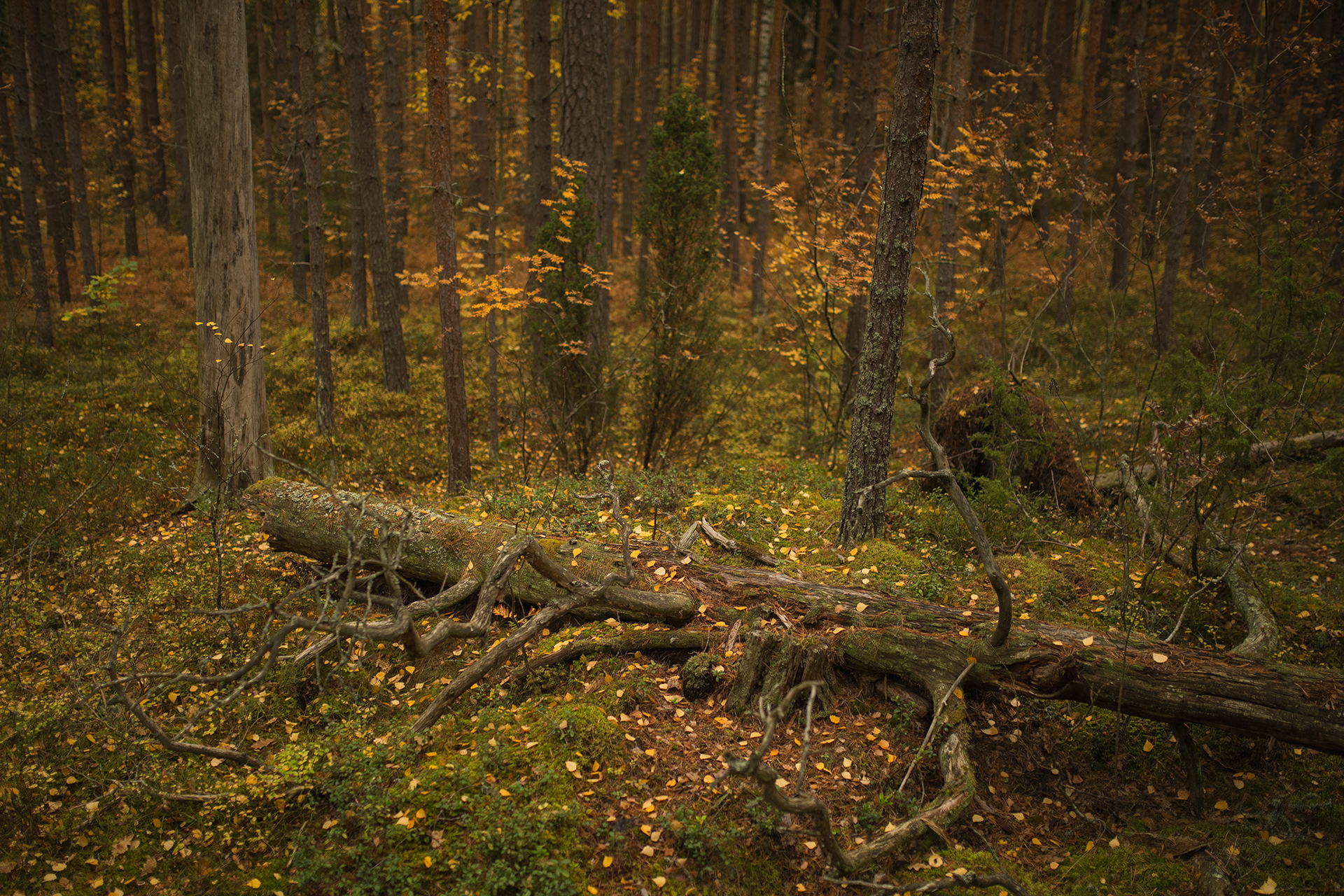Help – a tick!
The few-millimetre-long castor bean ticks (Ixodes ricinus) hang out in damp, shady grasses and on the forest floor, grabbing on to passers-by in the hopes of quenching their thirst for blood. Ruissalo’s roads and wide paths are usually devoid of castor bean ticks, but you should still wear long-legged trousers with socks pulled over them when walking along the paths. You should always check for ticks after moving about in nature, preferably several times a day.
The life of a castor bean tick consist of four stages: the egg, the larva, the nymph and the adult stage. After hatching, the tick needs to consume some blood at each stage in order to develop and eventually reproduce. The larvae, which are barely visible to the naked eye, use small rodents as their hosts. The 1–2-mm-long nymphs and larger adults prefer bigger host animals – which unfortunately include humans. While you can protect yourself against tick-borne encephalitis (TBE) with a vaccine, the only ways to prevent Lyme disease are to avoid getting bitten, remove attached ticks as soon as possible and monitor any skin symptoms near the bite location.
Castor bean ticks have been increasing in numbers throughout Finland, including Ruissalo, in the last two decades. According to castor bean tick surveys conducted on Ruissalo to determine the number of adult ticks and nymphs per 100 square metres, the number of ticks was 0.23 individuals/100 m² in 2000, 0.70 individuals/100 m² in 2013 and 12.49 individuals/100 m² in 2017 (Mäkinen et al. 2003 & Sormunen 2018). The most likely causes of the castor bean tick’s proliferation are climate change and the increasing numbers of mammalian host animals. Castor bean ticks are better at surviving mild winters than periods of severe sub-zero temperatures, and the growing roe deer population provides the ticks with easy access to food. The castor bean tick population is also maintained by other animals, such as small predators, small mammals and birds. Castor bean ticks are also transported from place to place by people and pets. Our perception of the prevalence of castor bean ticks may also have been affected by increased research into castor bean ticks, hikers’ awareness of the ticks and the media attention given to the ticks.


